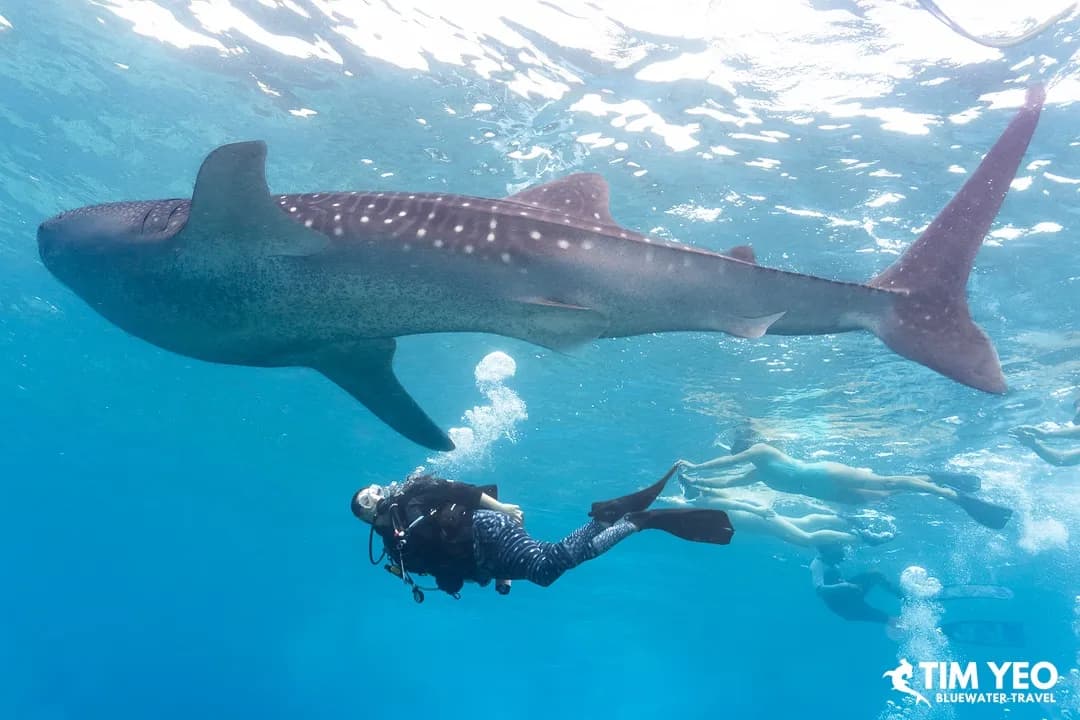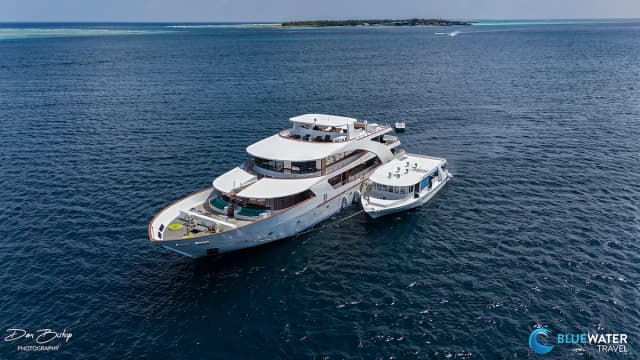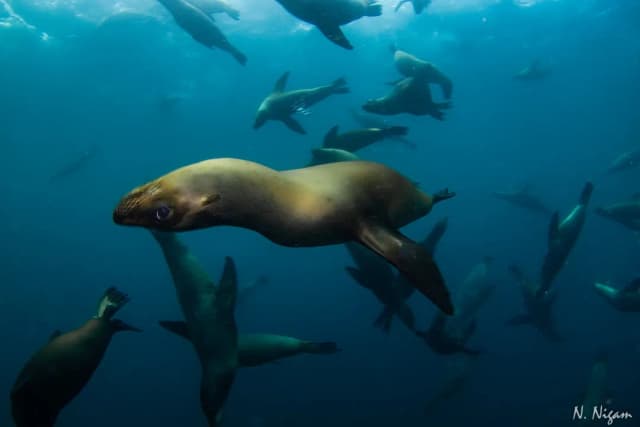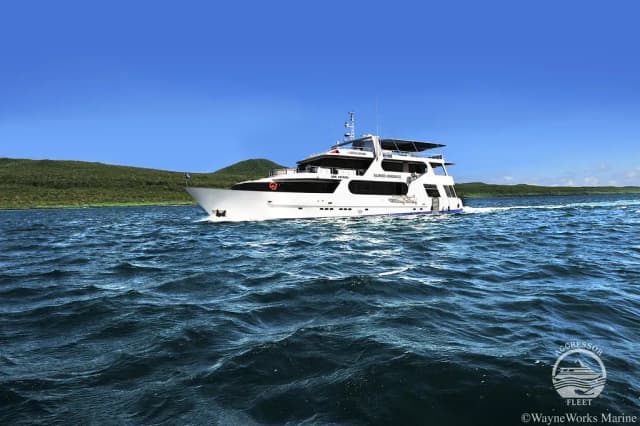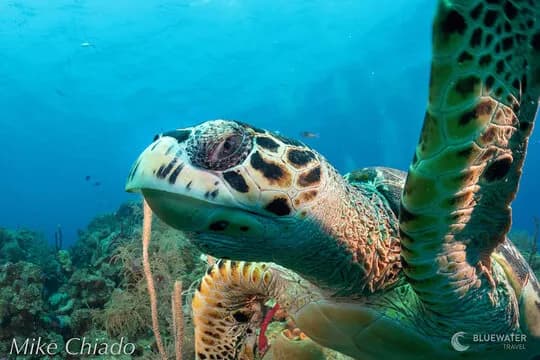Beginner’s Guide to Swimming with Whales & Whale Sharks: What to Know Before You Go
Quick Overview
The article "Beginner’s Guide to Swimming with Whales & Whale Sharks" by Bluewater Dive Travel serves as an essential resource for those interested in experiencing these majestic creatures up close. It provides comprehensive information on various whale and whale shark species, best locations for encounters, safety protocols, and ethical considerations. The guide emphasizes that swimming with these marine giants is accessible to beginners, offering practical tips and expert advice to ensure a safe and memorable experience.
Introduction
Going swimming with whales or whale sharks is a breathtaking, bucket-list experience—and yes, it's accessible even to beginners! This guide will prepare you with everything you need to know before jumping in.
What Species Will You Encounter?
From humpback whales breaching in warm tropical bays to the enormous but placid whale shark drifting along the surface, you'll encounter some of the ocean's most majestic creatures. Humpback whales are migratory mammals, known for their acrobatic breaches and complex songs. Whale sharks, on the other hand, are the world's largest fish—gentle, spotted giants that filter-feed on plankton and pose no threat to humans. In certain regions, you might also spot grey whales, orcas, or even blue whales, depending on the season. Understanding the difference is key: humpbacks come up for air, often visible from a distance before a swim. Whale sharks are surface feeders, gliding slowly with their mouths open, allowing you to calmly swim beside them. Both experiences are non-invasive when done correctly—and unforgettable.
Best Places to Swim with Whales and Whale Sharks.
Some of the most exciting global hotspots for swimming with whale sharks include Mo'orea, Socorro Islands, and the Galápagos Islands. For a calmer experience, the Similan Islands offer excellent visibility and regular sightings during the season.
- Mo'orea, French Polynesia (July to November): Humpback whales migrate to the warm waters of the South Pacific to give birth. Mo'orea offers shallow, clear lagoons where responsible tour operators guide swimmers to these giants.
- Tonga (July to October): One of the few places with licensed in-water humpback encounters. Its remote reefs and low boat traffic make it ideal for a more intimate experience.
- Silver Bank, Dominican Republic (January to April): A marine sanctuary for North Atlantic humpbacks. You must travel by liveaboard and follow strict interaction protocols.
- Isla Mujeres, Mexico (June to September): Home to one of the world's largest whale shark aggregations. Hundreds of them gather to feed on plankton-rich waters. Perfect for snorkelers.
- Galápagos Islands (June to November): A more advanced destination due to currents, but thrilling. Whale sharks frequent Wolf and Darwin Islands during these months.
- Socorro Islands, Mexico (November to May): A magnet for big animals, including whale sharks and humpbacks. Liveaboards make accessing the islands easier. Advanced divers may prefer places like Socorro, where strong currents and open-ocean pelagics offer a more challenging environment.
Bluewater Dive Travel partners with trusted, conservation-minded operators in all these locations to ensure sustainable, unforgettable encounters.
What to Expect as a First-Timer.
Your first swim with a whale or whale shark will likely feel surreal. The experience starts with a boat ride out to the animals' natural habitat. Once spotted, your guide will explain the approach: gentle entry, slow movement, and no splashing.
Don’t expect to chase or touch—you’re a quiet observer. Most animals remain unbothered if you follow their pace. Encounters may last anywhere from a few moments to several minutes, depending on the animal’s comfort level.
Beginner-friendly tours often include a pre-swim briefing, gear assistance, and even a practice snorkel. Many boats carry snorkel vests or flotation belts to help those less confident in the water. Remember, you’re not alone—everyone starts somewhere.
Safety Tips and Etiquette
Whale and whale shark swims should always be done responsibly. Here are some universal safety tips:
- Keep your distance: Follow local guidelines—usually 3 to 4 metres minimum.
- Stay horizontal: Avoid diving down or swimming above the animal.
- Never touch: Touching can harm marine life and lead to fines.
- Use reef-safe sunscreen: Conventional products damage coral reefs and sensitive marine ecosystems.
- Follow your guide: They know how to approach respectfully and increase your chances of a calm encounter.
- Be patient: Nature doesn't run on a schedule. Some days you wait longer or see fewer animals. Enjoy the ocean either way.
You don’t need scuba certification, but having the right snorkel gear makes all the difference:
- Mask and snorkel: A good fit is crucial. Test your mask seal before the trip.
- Fins: Lightweight, flexible fins help you move efficiently without tiring.
- Wetsuit or rashguard: A 2–3 mm wetsuit adds buoyancy and keeps you warm. In warmer waters, a rashguard will protect from the sun.
- Snorkel vest (optional): For extra buoyancy and peace of mind.
- Waterproof camera: If you're confident, capture the moment—just don't let filming distract from the experience. Interested in combining whale-shark encounters with expert photo coaching? Join our Photo Workshop in the Sea of Cortez.
My First Whale Shark Encounter
I had my first encounter in Isla Mujeres. I remember the nerves building up as we approached a feeding area. The guide counted us in—just two swimmers at a time—and we gently slipped into the blue. Within seconds, a shape appeared: massive, slow-moving, surreal. The whale shark glided beneath us, mouth open, filtering water like a gentle vacuum. Despite its size, it moved with grace. I hovered, heart racing, not from fear but awe. I’d never felt so small, so respectful of nature’s power and calm. Back on the boat, everyone had the same look: disbelief, joy, reverence. It was the moment that made me want to do it again, and again.
Conservation & Responsible Travel
Travel Swimming with these ocean giants is a privilege—and it comes with responsibility. Many of the world’s whale and whale shark populations are vulnerable. Choosing eco-conscious operators ensures your presence contributes positively.
Look for:
- Operators with marine conservation certifications.
- Tours that support local communities and research.
- Small group sizes to reduce stress on wildlife.
- Trips that avoid feeding or baiting animals.
Bluewater Dive Travel carefully vets all partners to ensure ethical standards are met. Your travel choice can help fund whale research, marine reserves, and local conservation jobs.
Start Your Journey Today
Ready to tick this off your bucket list? Let us help you book the whale or whale shark experience of a lifetime. Your underwater adventure starts here. Already comfortable in the water? Explore the world’s best shark diving locations to take things to the next level.
Frequently Asked Questions (FAQs):
What species of whales and whale sharks can I encounter?
The article details various species, including humpback whales and whale sharks, highlighting their unique behaviors and habitats.
Where are the best locations to swim with these marine giants?
Top destinations include the Silver Bank in the Dominican Republic for humpback whales and areas in Mexico for whale sharks.
Is it safe for beginners to swim with whales and whale sharks?
Yes, with proper guidance and adherence to safety protocols, beginners can safely enjoy these encounters.
What ethical considerations should I be aware of?
The guide emphasizes responsible tourism, advising against feeding wildlife and supporting sustainable practices to protect marine ecosystems.
What gear do I need for swimming with whales and whale sharks?
Essential gear includes a mask, snorkel, fins, wetsuit or rash guard, and a camera for capturing memories.
Where is a good place to snorkel for beginners?
Read our best snorkeling for beginners article
How can I book a trip with these gentle giants?
Bluewater Dive Travel offers various group trips and liveaboard options tailored for such experiences.
